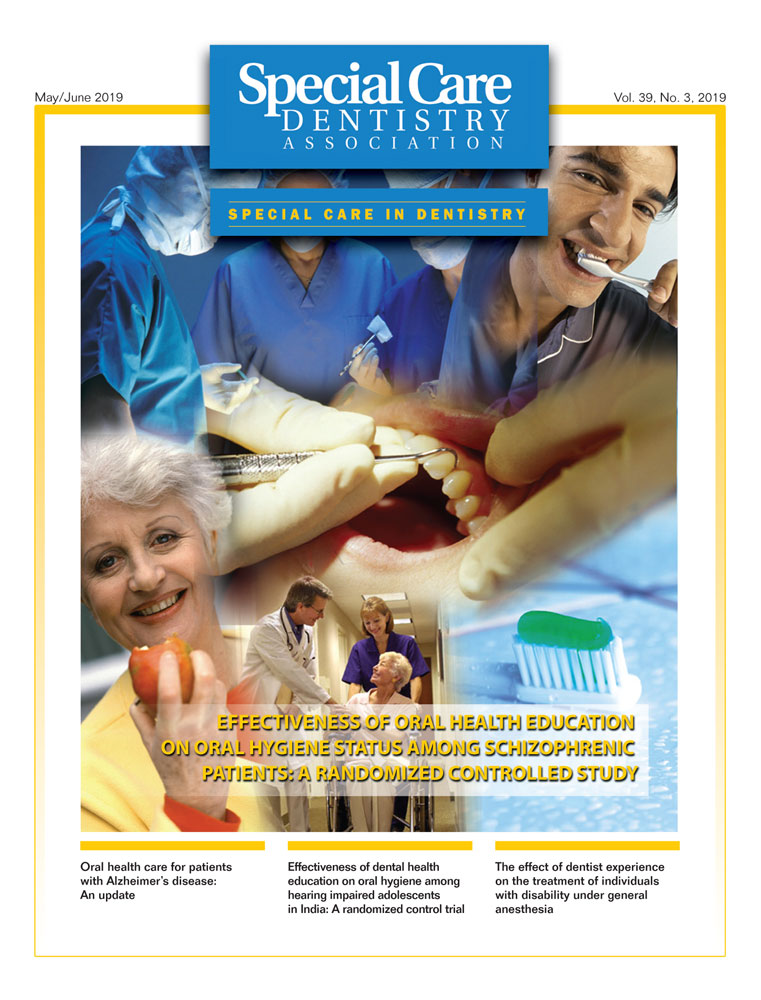Oral healthcare management of a child with phakomatosis pigmentovascularis associated with bilateral Sturge-Weber syndrome
Abstract
The aim of this report was to describe an approach for a child with phakomatosis pigmentovascularis Type IIb associated with bilateral Sturge–Weber syndrome and autistic spectrum disorder. A 6-year-old boy was referred to the Special Care Dental Clinic with the main complaints of “damaged teeth and pain.” The physical examination revealed bilateral port-wine staining on the face, neck, and upper and lower limbs, congenital dermal melanocytosis on the back, and dilated blood vessels in the sclera. Intraoral examination revealed hypertrophy of the maxillary bone, diffuse and intense redness of the oral mucosa, crowding, anterior open bite, and carious lesions in the left and right upper second primary molars. The medical team was consulted prior to dental treatment to assess the risk of bleeding, and anesthesia was contraindicated. Instruction about brushing technique and procedures for a suitable oral environment were then carried out using a minimally invasive restorative treatment. The patient did not exhibit collaborative behavior, and follow up continues with the patient receiving preventive treatments. Therefore, a multidisciplinary approach to these patients is fundamental to avoid complications during dental intervention. Moreover, regular visits to the dentist reduce the need for invasive treatments and improve the well-being of these individuals.
CONFLICT OF INTEREST
The authors declare no conflicts of interest.




